

Ronsco is a leading supplier of electropolished tube in China, enowned for our exceptional production standards, strict quality control, extensive inventory, and unwavering commitment to excellence. We specialize in supplying electropolished tube & pipe in various OD, ID, wall thickness and length, and cover a variety of materials such as austenitic stainless steel, duplex stainless steel, superalloy, pure nickel, nickel alloy, etc, to meet customers' needs for different projects.
|
Available Material |
Grade |
|
Austenitic Stainless Steel |
316L, 316L Mod, 316LVM, 310MoLN etc,. |
|
Duplex Stainless Steel |
2205, 2507, S32760 etc,. |
|
Superalloy |
Nimonic 75, Nimonic 80a etc,. |
|
Pure Nickel |
Nickel 200, Nickel 201 etc,. |
|
Nickel Alloy |
Inconel 600, Inconel 601, Inconel 625, Inconel 718, Sanicro 28, Incoloy 800, Incoloy 800H, Incoloy 800HT, Incoloy 825 etc,. |
In addition to on-demand production, we also offer an large inventory, regularly stock a variety of materials and specifications. Regardless of project size, we can all meet deadlines and deliver final products that meet or exceed industry standards.
Electropolishing is a surface finishing process that uses electrochemical principles to polish metal surfaces. By immersing the metal workpiece as the anode in a specific electrolyte solution and applying a direct current, the surface of the workpiece undergoes anodic dissolution, which removes microscopic irregularities and defects, resulting in a smooth and shiny surface. It can be divided into the following categories according to the type of electrolyte:
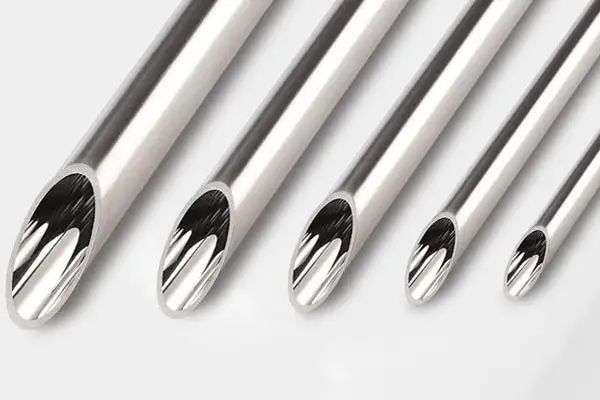
Ronsco is a supplier with more than 28 years of experience in the metal tubes field, we always adheres to the business phiosophy of "customer-centered", tries its best to meet the requirements of customers and pursues win-win cooperation with customers. Are you looking for a reliable tubes manufacturer ! Contact Us Now! Email: manager@ronsteel.com
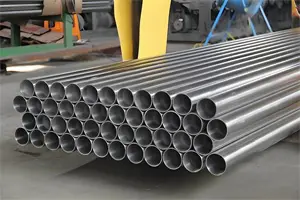
Pure nickel tube & pipe composed entirely of nickel, the purity of nickel ensures a high level of corrosion resistance, making them ideal for environments where protection against corrosion is paramount.
| Grades | UNS | EN | GB |
| Nickel 200 | N02200 | 2.4060 / 2.4066 | N6 |
| Nickel 201 | N02201 | 2.4061 /2.4068 | N5 |
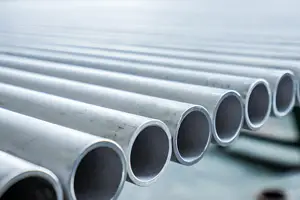
Nickel alloy tube & pipe is prized for their ability to excel in extreme conditions, the unique chemical composition and mechanical properties are different from traditional materials.
| Grades | UNS | EN | DIN |
| Inconel 600 | N06600 | 2.4816 | NiCr15Fe |
| Inconel 601 | N06601 | 2.4851 | NiCr23Fe |
| Inconel 625 | N06625 | 2.4856 | NiCr22Mo9Nb |
| Inconel 718 | N07718 | 2.4668 | NiCr19NbMo |
| Sanicro 28 | N08028 | 1.4563 | X1NiCrMoCu 31-27-4 |
| Incoloy 800 | N08800 | 1.4876 | X10NiCrAlTi 32-20 |
| Incoloy 800H | N08810 | 1.4958 | X5NiCrAlTi31-20 |
| Incoloy 800HT | N08811 | 1.4959 | X8NiCrAlTi32-21 |
| Incoloy 825 | N08825 | 2.4858 | NiCr21Mo |
| Monel 400 | N04400 | 2.4360 | NiCu30Fe |
| Hastelloy C276 | N10276 | 2.4819 | NiMo16Cr15W |
| Hastelloy C22 | N06022 | 2.4602 | NiCr21Mo13Fe4W3 |
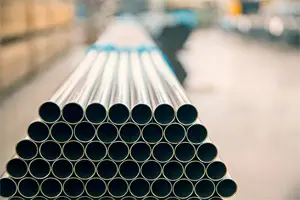
Superalloys tube & pipe is a special category of advanced materials, the unique feature of this alloy lies in their ability to maintain their mechanical properties at elevated temperatures, where conventional materials would typically degrade.
| Grades | UNS | EN | GB |
| Nimonic 80A | N07080 | 2.4631 / 2.4952 | GH3039 |
| Nimonic 75 | N06075 | 2.4630 / 2.4951 | GH3030 |
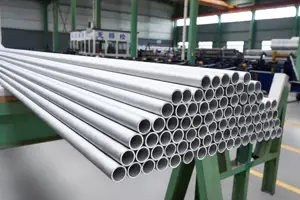
Austenitic stainless tube & pipe are a prevalent type of stainless steel with high levels of chromium and nickel, these tubes exhibit remarkable corrosion resistance, particularly in acidic environments.
| Grades | UNS | EN | DIN |
| 316L | S31603 | 1.4404 | X2CrNiMo17-12-2 |
| 316L Mod | S31723 | 1.4435 | X2CrNiMo18-14-3 |
| 316LVM | S31673 | 1.4441 | X2CrNiMo18-15-3 |
| 310MoLN | S31050 | 1.4466 | X1CrNiMoN25-22-2 |
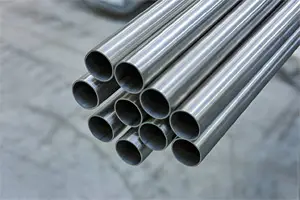
Duplex stainless tube & pipe represent a specialized category of stainless steel known for their dual- phase microstructure, combining both austenitic and ferritic phases.
| Grades | UNS | EN | DIN |
| 2205 | S32205 / S31803 | 1.4462 | X2CrNiMoN22-5-3 |
| 2507 | S32750 | 1.4410 | X2CrNiMoN25-7-4 |
| F55 | S32760 | 1.4501 | X2CrNiMoCuWN25-7-4 |
Feel free to contact us by submitting this form or use our email. Our sales representative will contact you within 24 hours. Thank you for your interest in our products.